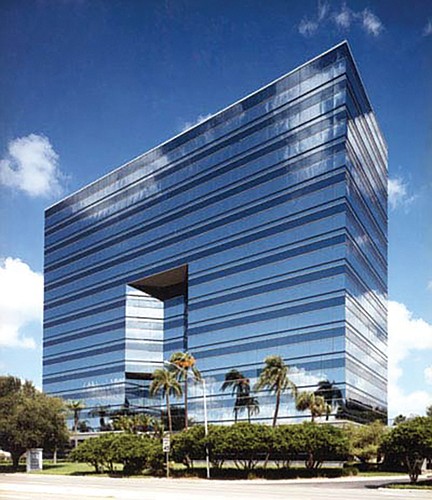- November 25, 2024
-
-
Loading

Loading

When Ideal Image Development Corp. inked a lease to move its regional headquarters to the 13-story Tampa Commons office tower last month, it was motivated, in part, by renovations aimed at improving building functions and aesthetics.
Owner IX WR 1 North Dale Mabry Hwy L.P., an affiliate of Greenwich, Conn.-based Starwood Capital Group, installed an on-site cafe and renovated restrooms and common areas in the 254,808-square-foot building in the aftermath of its $43.24 million purchase three years ago.
“Improvements and amenities we're finding are absolutely key in order to remain competitive,” says Sharon Bragg, a vice president with commercial brokerage firm JLL, which leases the 30-year-old building.
“You have to keep the buildings relevant,” she added. “Tampa Commons had a lot of upscale renovations done, and today inside it looks like a brand-new building.”
Tampa Commons marks the latest in a series of Gulf Coast office towers that have embarked on renovations amid a tightening market to lure new tenants or retain existing ones.
Landlords and leasing representatives like Bragg maintain that even relatively simple improvements like upgrades to common areas, elevator systems and lobbies can make a huge difference -- especially at a time when Class A office rents are reaching all-time highs along many areas of the Gulf Coast.
Adding amenities like in-building fitness centers and communal conference space are also popular with tenants, especially in Class A buildings.
And while many new amenities cut into landlords' gross leasable areas, property owners say they are critical at a time in the real estate cycle when new development is on the verge of occurring.
Dan Woodward, Tampa vice president for Raleigh, N.C.-based Highwoods Properties, says many of the improvements are geared toward tenants hoping to woo or keep millennial workers.
“A lot of it has to do with competing for a changing demographic workforce,” Woodward says. “More collaborative spaces, fitness centers, food options and meeting areas are all being designed with younger workers in mind.”
In some cases, the improvements are falling to the bottom line.
“We've seen owners that have made improvements and been successful in boosting occupancy and, in some cases, rental rates,” Woodward says. “We've found it's worth it to continually improve for the increased deal flow it brings, and the fact that we're able to bring in many more customers to our buildings.”
For its part, Highwoods spent more than $10 million to reconfigure parking, convert an 8,000-square-foot corporate cafeteria to an upscale cafe, upgrade common areas, add a lounging deck to a retention pond, create an employee collaborative area known as “The Verve” and revamp a fitness center in its 1 million-square-foot Tampa Bay Park.
In the wake of its $70 million deal in August for Rivergate Tower, in Tampa, Banyan Street Capital said it would also spend more than $10 million to improve the 31-story, iconic skyscraper.
More specifically, Banyan Street intends to renovate common areas, restrooms and lighting at the 400 N. Ashley Drive building to “elevate the project to a new standard for downtown,” a company senior managing director said.
In many cases, improvements are undertaken primarily because of the age of a property, or because new development looms. Rivergate, for instance, is 27 years old. Tampa Commons, at 1 N. Dale Mabry Blvd., was completed in 1985, according to Hillsborough County property records.
But Woodward and others stress that improvements need to be continual in an ever-tightening and competitive market.
“It makes sense from a landlords' perspective whether new speculative development is on the horizon or not,” he says.
For Ideal Image, the presence of a cafe inside Tampa Commons was highly valued when it committed to occupy 20,800 square feet on the building's 12th floor.
“Different tenants have different needs and desires when it comes to amenities,” Bragg says. “Cafes aren't in a lot of buildings, especially suburban buildings, so that was very important.”
- K.L. McQuaid